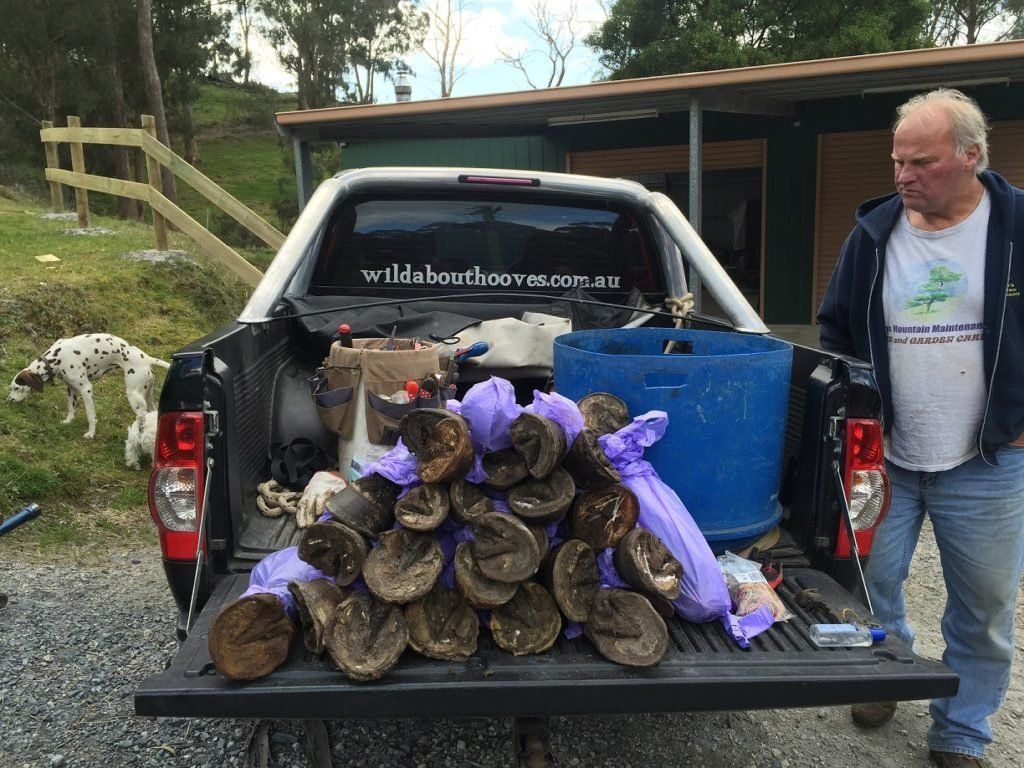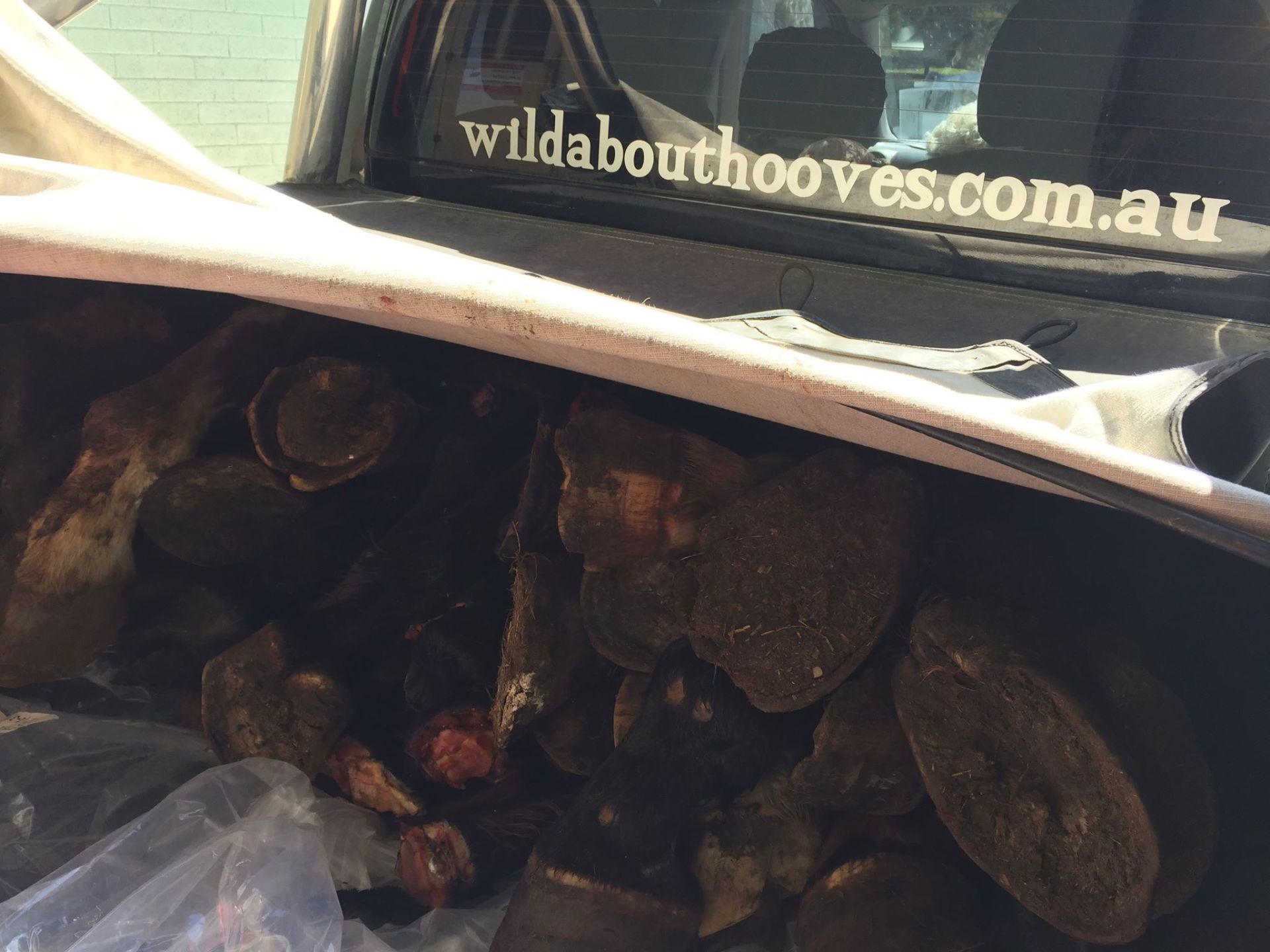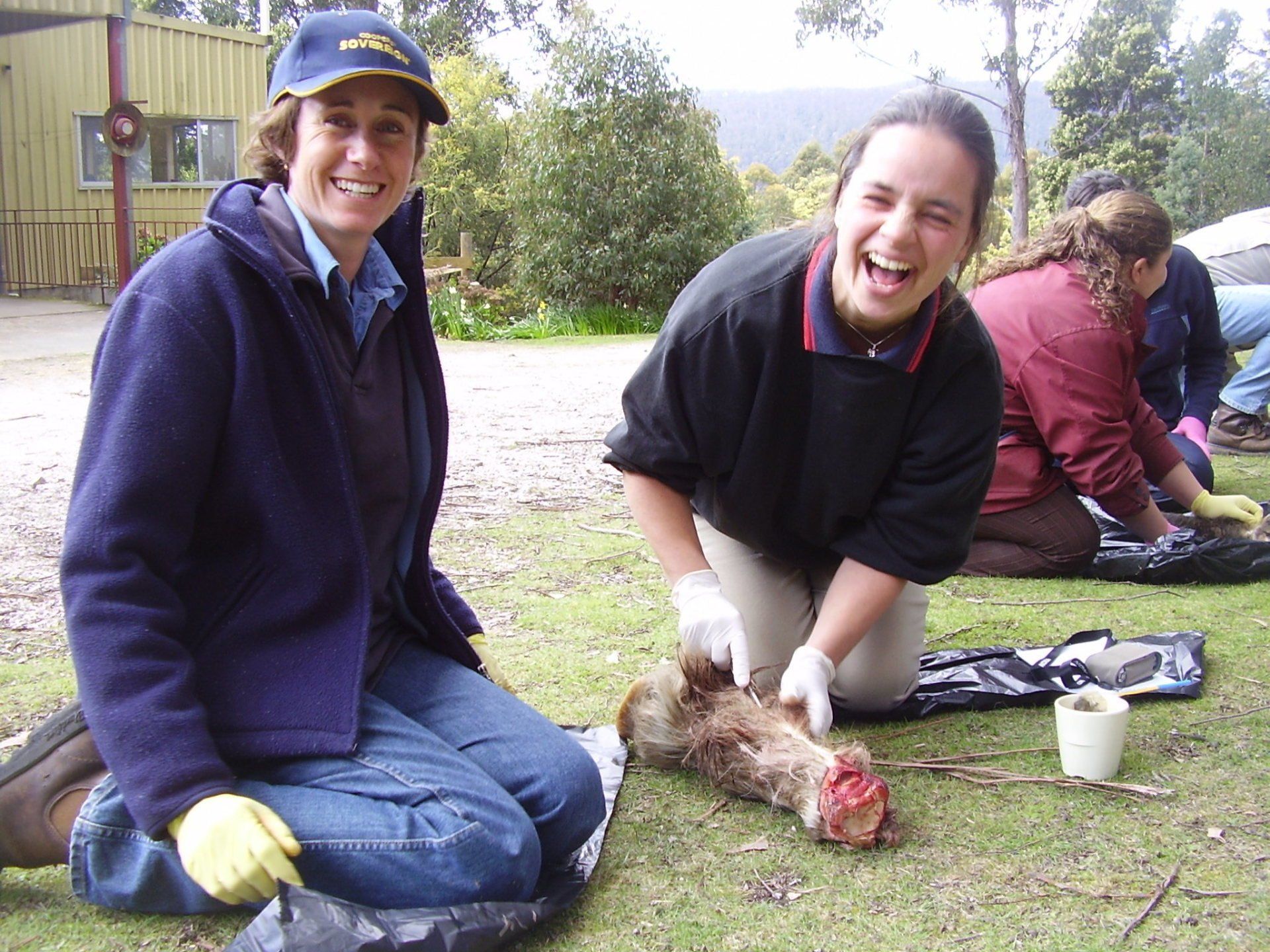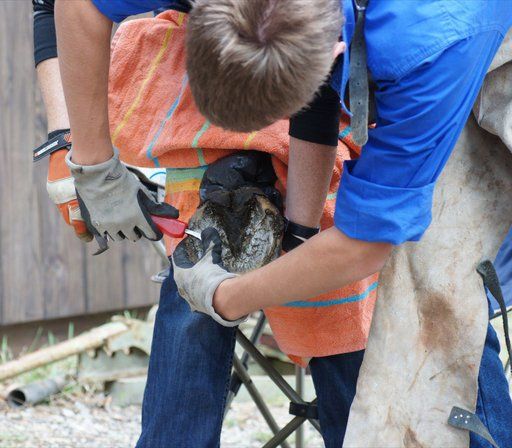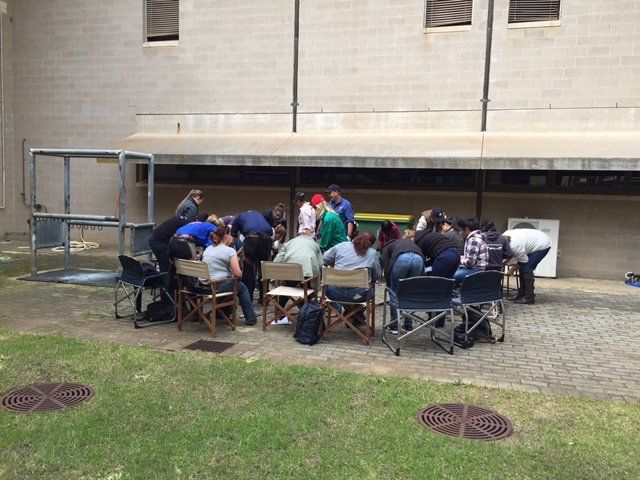THE CADAVER HORSE LEGS
Wild About Hooves • 7 May 2017
It’s a word that gets your attention, conjuring up an image of a dead horse and its legs being chopped off.
It especially gets your attention if you’re going to be meeting one soon—which is what participants of a Wild About Hooves’ Learn to Trim Workshop get to do.
It’s part rite of passage, part personal test, but trimming and dissecting cadaver legs is always the subject of anticipation and apprehension. Almost every hoof care student wonders how he or she will react when it’s time to start trimming a dead horse leg.
Students are apprehensive to start, in fact some say they don’t want to participate.
Jen Clingly, director of Wild About Hooves highlights in her introductory lecture. “This course is a little different – it’s really hands on and we pride ourselves on giving you the practical skills and knowledge to be able to maintain your own horses hooves. But to gain this experience you will be working on a number of cadaver legs. It’s an unusual medium to work with but they offer a great opportunity to hone in your tool skills without getting kicked or bitten or struggling to position yourself comfortably under a live horse.
Firstly, all students gain a solid understanding of the distal limb anatomy of the horse, which gives them confidence to trim safely to the landmarks on the hoof .
Clingly likes to ask that students acknowledge for a few moments, the horses and to honor their legs for this opportunity to study and learn hoof care.
Clingly admits with a smile that her main job of the day is to keep the cadaver legs under control. She bags them to disguise them and to make working on them easier. The bag is taped at the fetlock to allow students to just focus on the hoof.
Wild About Hooves trainers guide and supervise students in using the trimming tools, recognising landmarks on the hoof, recognising healthy hooves and recognising pathologies in the hoof. They get started with just cleaning out the cadaver hoof and preparing their trim strategy.
With the hoof picks in action, knives and rasps at the ready, the workshop turns into a group of bowed heads and hunched shoulders. Everyone seems focused on the task at hand. Occasionally a head pokes up above the huddle of shoulders with a question for an instructor.
As the workshop and afternoon progresses, students became more comfortable and circulate around, examining each other’s cadavers, beginning to get a sense of the biological variation among the horse’s hooves.
Sometimes a student will turn white. Sometimes the smell creates disgruntled noises.
Adverse reactions to cadavers are hardly unusual. About 5 percent of students experience some sort of emotional upset. “Typically they adjust and they come to grips and are not burdened or troubled by it on a long term basis.”
Participants of the workshop have taken the first of many major steps to becoming hoof trimmers. At the end of the day they go home capable and competent to maintain their own horses hooves.
Some participants even take home their cadaver leg to show family or friends what they learnt, other students take them home to bury them and dig them up later to make an anatomical bone specimens, others take them as a present for their dogs.
But best of all, they accomplish the hard feat (excuse the pun) of trimming a cadaver horse leg.
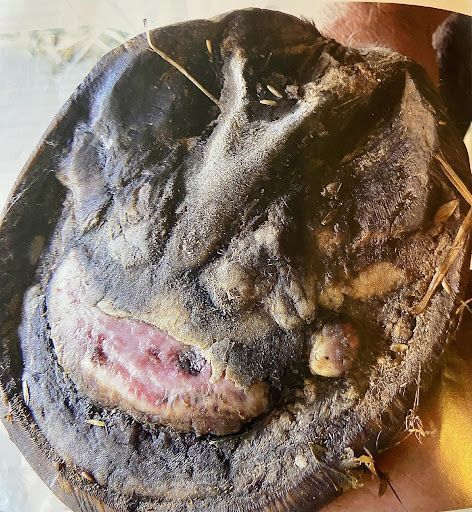
Laminitis kills thousands of horses every year, and leaves thousands of others debilitated with lameness. It will and can affect any horse. And for you, the horse owner it can be devastating: you feel guilty and heartbroken at your horses suffering, confused with all the information as it is typically explained by professionals in scientific terms that can be difficult to understand, costly veterinary bills and you have the major task of nursing your horse back to recovery. . Unseasonal weather patterns around Australia with abundant rain and sunshine saw laminitis at a near epidemic last year. The reason being, that the environmental conditions can trigger increases in the sugar, starch and fructan. These collectively known as non-structural carbohydrates can cause laminitis in any horse or pony. Alarm bells ring this spring!! Be warned and be prepared, for prevention is better than cure.
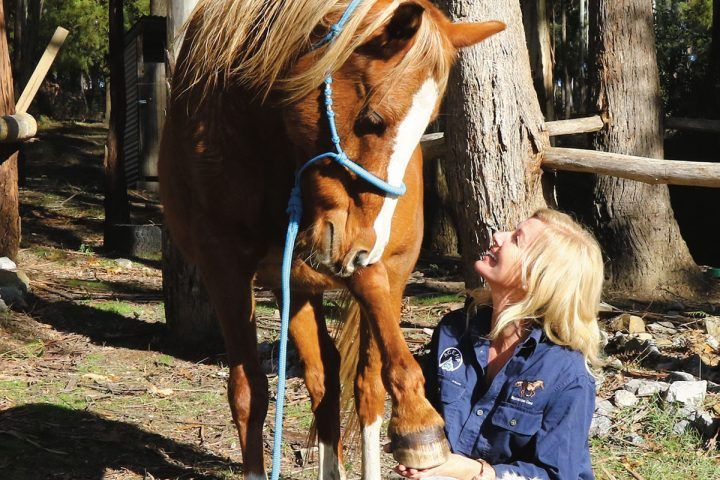
The extraordinary relationship between humans and the horse has been running since before the birth of Christ. Indeed, there is evidence our domestication of horses goes as far back as 3500 BC. And ever since we recognised the utilitarian value of the horse, there has been the horseshoe. The use of horseshoes has become an almost unquestioned tradition. Humans have been nailing shoes onto horses’ hooves for well over a thousand years. Who can remember back to a time otherwise?

